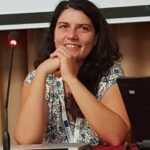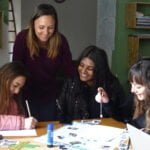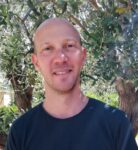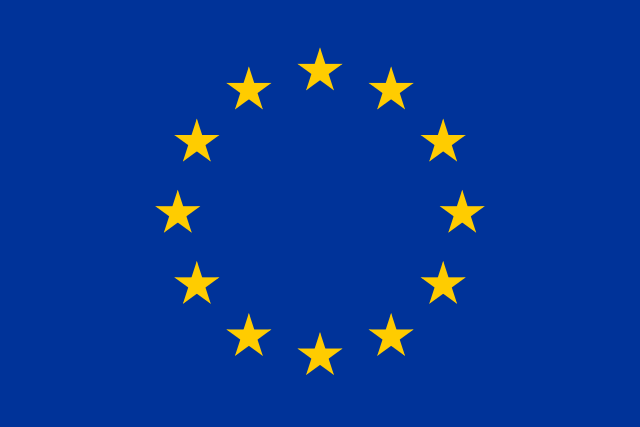As a secondary school teacher, I participated with a group of students in the UrbEx project in 2019. The most inspiring aspect for me was seeing my students engage enthusiastically and committedly with young people from other countries and talk to them about their neighborhood in such a passionate and competent way I had never seen before in class. My students, even those who hardly speak in class at all, showed me that being actively involved in such a stimulating activity can improve their feeling of belonging to their city and their effective communication skills. Still today, they keep talking about UrbEx and often ask me when it would be possible to do it again!
Walk around, study and interview local people! View the streets you pass every day from a new perspective! Imagine your city as a person and tell us their secrets! These were just a few of the fascinating activities run by the UrbEx project, which organised creative local workshops across five countries and an exciting youth exchange in Sicily, Italy.
Participation is the magical principle of all learning experiences. It is a big part of non-formal education! Learners need to feel they are part of the process to give something back to the community.
Curious? To find out more about this original and intriguing project, we talked to the Project Coordinator, Paola Pizzo, and Project Manager, Giorgio Barbato:
What does urban exploration mean in an educational context?
It is an innovative way to involve young people in really thinking about their surroundings, and their relationships to communities and neighbourhoods. Walking down the street with a smartphone in our hand, it is easy to ignore the outside world. But so much is happening around us! Becoming more aware of living in a city raises all kinds of questions. How much do we really know about the place where we live? Who else lives there, and why? Where does our neighbourhood begin and end? Why do areas of our city look so different from each other? To answer these questions, this project brought together young people and youth workers from five European cities for a year to design, test and develop new and fun ways to explore urban spaces.
How did you choose your partners?
We specifically looked for organisations from similar urban backgrounds, but with a variety of interests. Some had more general experience in working with schools, while others were focused on reducing social inclusion or providing platforms for digital mapping. Our youth workers were just as diverse, ranging from educators, architects and illustrators to archaeologists and anthropologists. Combining their expertise enabled us to offer a truly unique programme!
How was the project structured?
We began by holding planning meetings with our partners and organised a week-long training where each partner would take responsibility for one learning day. The youth workers organised local groups of young people across five cities (Albacete in Spain; Ljubljana in Slovenia; London in England; Berlin in Germany and Palermo in Italy), who started to explore their neighbourhoods and upload their observations to a digital map. These young people would then spend a week together in Palermo on a youth exchange. This programme was followed up with reflection and feedback sessions to make youngsters understand which competences they have developed.
What kinds of young people took part in the week-long youth exchange in Palermo, Italy?
Most were high school students. We especially wanted to attract young people who were at risk of feeling socially excluded – for example, we invited teenagers living in social housing projects in London, while others came from migrant backgrounds. The groups were accompanied to Palermo and guided throughout the programme by the youth workers who tailored the tools to the groups’ needs.
What kinds of activities did you do during the youth exchange?
We started by trying out different types of activities to find the best ways of engaging young people, and created a toolkit from our favourites. The Map my World exercise asks youngsters to think about their own special places in the world, and explore their relationships with them in detail. City Visionary is a board game involving roleplay that encourages young people to think about urban development and decision-making by co-creating an imaginary environment. Secret Mission is about hunting for clues and collecting information across different areas, before coming back to report on our findings. This game was perfect to open up in-depth discussions about hidden features of cities and their secret meanings! And it is also a great way of team building.
How did you get young people interested in urban exploration?
Urban exploration is a great activity because anyone can do it. During the youth exchange programme, we used groupwork to encourage young people to make friends and organise themselves. Being in groups of different nationalities meant that they had to develop their communication skills, although each group had Italian speakers so they could also talk easily with local people.
What were the main challenges you faced?
The youth exchange group was quite big. We had around 50 participants with very different needs, so sometimes it could be tough trying to adapt an activity to suit all of them. Those from underprivileged backgrounds, for example, had a difficult time adjusting to the new ways of learning. But they were also the ones that enjoyed and changed the most during the activities: the project made them aware of their potential and the possibilities of a better future.
How did local communities react to young explorers in their city?
Palermo was a great location for this kind of project, as so much of the city’s life happens on the streets. Old people sit outside the bars, ladies clean and hang the clothes to dry, kids play together on the squares. When we brought our foreign groups to do outdoor activities, the residents were curious, of course, and wanted to know why we were playing such strange games! But they were able to learn more about the project when the youngsters interviewed them.
Did you find a way to continue the work with mapping?
Some young people have created new local activities and applied for funding for a European Solidarity Corps project. We also plan a second edition of UrbEx with greater focus on expanding our network of educational organisations using the same methodologies with youth.
What do you suggest to others who would like to start a similar project?
Have fun! Teaching is most effective when youngsters enjoy the activity so much that they don’t even realise that they have learned something. Only during the evaluation do they recognize how much they have achieved, and had a fantastic experience in doing so.
Project outcomes
The activities that engaged young people in exploring cities have been collected in a toolkit and their creative maps can be seen on a website.
Urban Exploration Toolkit
You can browse the fascinating games, methods and ideas shared during the project.
Community Maps
Check the mapping adventurous of young people through the maps where they added their most interesting discoveries.
About the project
Supported by:
Erasmus+ / Cooperation Partnerships
EU Youth Programme Priority:
Inclusion and Diversity
Topic:
Youth Participation / Youth Sector Development
Visibility:
25 youth workers, 5 group leaders and 45 young people in 5 countries raised awareness of their urban context during the one year of the project. To monitor what they discovered through their urban exploration activities, they created the hashtag #urbex4youth and shared the visually catchy, creative outcomes on Facebook, Instagram, Youtube and their websites.
Organisations involved:
BOND OF UNION SOCIETA’ COOPERATIVA SOCIALE (IT), KULTURNO DRUSTVO PROSTOROZ (SL), DRAMBLYS (ES), COLINI-TRIPODI GBR (DE), MAPPING FOR CHANGE CIC (UK)














